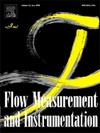Study on the influence of air-injection on cavitation characteristics of pump-turbine under turbine condition
IF 2.3
3区 工程技术
Q2 ENGINEERING, MECHANICAL
引用次数: 0
Abstract
The occurrence of cavitation not only reduces the hydraulic performance of the unit but also generates vibrations and noise. In severe cases, cavitation can cause erosion damage to the flow components, significantly shortening the operational lifespan of the unit. Previous studies on air injection in pump-turbine experiments have mainly focused on vibration reduction or improvements in various unstable flow conditions, with limited research on air injection for Cavitation improvement. In this study, short air injection pipe were installed at the adjustable guide vane region and the main shaft center to inject air into the fluid domain. The effects of different air injection locations and concentrations on cavitation improvement in key flow components were analyzed. The results show that at cavitation coefficient (mild cavitation) and an air injection volume fraction (IAVF) of 4 % in the adjustable guide vane region, the cavitation bubbles attached to the turbine blades and the runner cone surface were significantly reduced. At cavitation coefficient (severe cavitation) and an IAVF of 6 % in the adjustable guide vane region, the maximum pressure values at the chord line of the blade and the draft tube region increased by 0.9 kPa and 1.8 kPa, respectively. When the IAVF at the main shaft center was 5 %, the maximum pressure in the draft tube region increased by 0.8 kPa. Both air injection schemes significantly reduced the cavitation volume in the draft tube region. It is evident that the increase in pressure reduced the extent of cavitation, with air injection at the main shaft center showing a more significant effect on cavitation improvement in the draft tube region. With the increase of IAVF (Injected Air Volume Fraction), the efficiency of the pump-turbine gradually rises. However, the injected air introduces additional turbulent kinetic energy, resulting in energy loss. The study reveals that the optimal aeration rate is IAVF = 6 % for air injection in the guide vane region, while IAVF ≈ 3.3 % achieves optimal performance for air injection at the main shaft center.
涡轮工况下喷气对水泵水轮机空化特性影响的研究
空化的发生不仅会降低机组的水力性能,还会产生振动和噪声。在严重的情况下,空化会对流动部件造成侵蚀破坏,大大缩短装置的使用寿命。以往对泵水轮机实验中喷射空气的研究主要集中在各种不稳定流动条件下的减振或改善,对改善空化的喷射空气研究较少。在本研究中,在可调导叶区域和主轴中心安装短喷气管,将空气注入流体域。分析了不同喷气位置和喷气浓度对改善关键气流组分空化的影响。结果表明,当空化系数σ=0.176(轻度空化)和可调导叶区空气喷射体积分数(IAVF)为4%时,涡轮叶片和转轮锥面上的空化气泡明显减少;当空化系数σ=0.02(严重空化)和可调导叶区域IAVF为6%时,叶片弦线和尾水管区域的最大压力值分别增加了0.9 kPa和1.8 kPa。当主轴中心IAVF为5%时,尾水管区域最大压力增加0.8 kPa。两种空气注入方案均显著减小了尾水管区域的空化体积。可以明显看出,压力的增加减小了空化程度,在主轴中心喷气对尾水管区域的空化改善效果更为显著。随着注入空气体积分数(IAVF)的增加,水泵水轮机的效率逐渐提高。然而,注入的空气引入了额外的湍流动能,导致能量损失。研究表明,导叶区域喷风的最佳曝气率为IAVF = 6%,主轴中心喷风的最佳曝气率为IAVF≈3.3%。
本文章由计算机程序翻译,如有差异,请以英文原文为准。
求助全文
约1分钟内获得全文
求助全文
来源期刊

Flow Measurement and Instrumentation
工程技术-工程:机械
CiteScore
4.30
自引率
13.60%
发文量
123
审稿时长
6 months
期刊介绍:
Flow Measurement and Instrumentation is dedicated to disseminating the latest research results on all aspects of flow measurement, in both closed conduits and open channels. The design of flow measurement systems involves a wide variety of multidisciplinary activities including modelling the flow sensor, the fluid flow and the sensor/fluid interactions through the use of computation techniques; the development of advanced transducer systems and their associated signal processing and the laboratory and field assessment of the overall system under ideal and disturbed conditions.
FMI is the essential forum for critical information exchange, and contributions are particularly encouraged in the following areas of interest:
Modelling: the application of mathematical and computational modelling to the interaction of fluid dynamics with flowmeters, including flowmeter behaviour, improved flowmeter design and installation problems. Application of CAD/CAE techniques to flowmeter modelling are eligible.
Design and development: the detailed design of the flowmeter head and/or signal processing aspects of novel flowmeters. Emphasis is given to papers identifying new sensor configurations, multisensor flow measurement systems, non-intrusive flow metering techniques and the application of microelectronic techniques in smart or intelligent systems.
Calibration techniques: including descriptions of new or existing calibration facilities and techniques, calibration data from different flowmeter types, and calibration intercomparison data from different laboratories.
Installation effect data: dealing with the effects of non-ideal flow conditions on flowmeters. Papers combining a theoretical understanding of flowmeter behaviour with experimental work are particularly welcome.
 求助内容:
求助内容: 应助结果提醒方式:
应助结果提醒方式:


